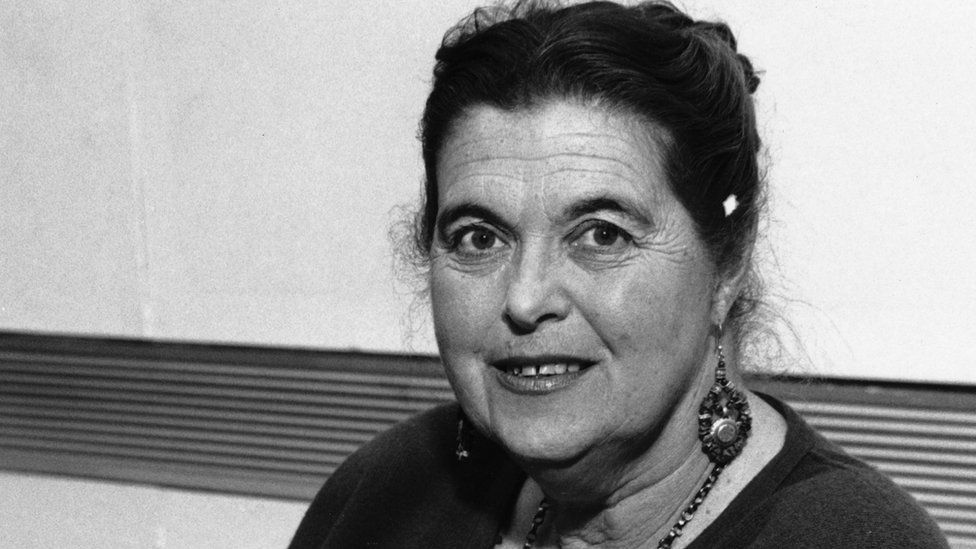ARTICLE AD BOX
 Image source, Getty Images
Image source, Getty Images
By Helen Bushby and Victoria Lindrea
Culture reporter
British author Lynne Reid Banks, who wrote books including The L-Shaped Room and The Indian in the Cupboard, has died at the age of 94.
The writer died of cancer "peacefully with her family around her" on Thursday, her agent James Wills said.
She made her mark as a writer of children's literature, with her other works including Harry the Poisonous Centipede and I, Houdini.
She "leaves a massive legacy of wonderful work", said her son.
Gillon Stephenson added that he received messages daily from people telling him "what a difference she has made".
Banks, who was born in Surrey in 1929, once said: "I'm not very good at living with characters that I don't like.
"I have to see something attractive about them in order to want to explore them."
She was referring to Jane Graham, the lead character in her classic The L-Shaped Room - the tale of a middle-class girl cast out of the family home after her father learns she is pregnant.
The 1961 book fed the fevered imaginations of young girls growing up in an era when sex was still often barely acknowledged at home, but feminism was hovering on the global horizon.
Lynne Reid Banks: "My mother said nobody was going to believe this wasn't about me"
It was Reid Banks' first novel - a contemporary page-turner and a forerunner of today's popular YA (Young Adult) genre.
Such was its popularity that within two years of publication it had been turned into a big-budget film starring Leslie Caron and directed by Whistle Down the Wind's Bryan Forbes - a film Reid Banks said it took her 20 years to forgive for its cavalier treatment of her characters.
"I felt them so real in my imagination that I didn't like them being altered," she told journalist Andrew Whitehead in 2000.
Reid Banks' mother - "always my sternest critic " - was less impressed with her daughter's debut. "If even one young woman reads this book and thinks there is something brave and gallant, and independent, about having a baby in this way - you will have lot to answer for," she told her.
"I never thought of any responsibility of that kind," said Reid Banks later. "I simply wrote a story."
Her mother said The L-Shaped Room felt "very, very real" and told her daughter many would assume that the tale of a single girl left pregnant and alone after an unsatisfactory sexual encounter was a "thinly-veiled autobiography".
But - aside from a fleeting night when she ran away to "down-at-heel" Fulham after a family row - Jane and Lynne had little in common.
Reid Banks, who was evacuated to Canada with her mother during World War Two, returning to the bomb-damaged streets of London at the age of 15.
Having secured a place at drama school Rada, she "failed dismally" in her first ambition - to become an actress like her adored mother - and wound up working at ITN as one of the UK's first female television journalists.
'Linseed Cranks'
"We 'girl reporters' - there were just two of us - became minor celebrities," the author wrote in the Guardian in 2011, recalling how she "forged intrepidly through strike-mobs", attended film premieres and "brought real people... into the audience's living rooms".
"Benny Hill once honoured me with a sketch in which I was sent up as eager-beaver 'girl reporter Linseed Cranks' - those were the days."
The role suited Reid Banks' exhibitionist nature - but being "booted off" to the job of backroom scriptwriter did not. The L-Shaped Room followed, written "at a company typewriter in company time".
"I had no plan, no design - it was simply something that grew," she explained. It took nearly two years to complete, but its status as a bestseller was immediate.
Image source, Getty Images
Image caption,Lynne Reid Banks revelled in her role as a TV reporter at ITN
Reid Banks abandoned London soon after for the fledgling nation of Israel - in pursuit of love, namely the sculptor, Chaim Stephenson, whom she had met while under contract to ITN.
Stephenson was living on a kibbutz, and the pair married in Cyprus, Reid Banks went on to spend nearly a decade on the kibbutz, teaching English and raising the couple's three sons, Adiel, Gillon and Omri.
The demands of family life meant writing took a back seat - she produced one novel in eight years.
Returning to England, Stephenson became a full-time artist and Reid Banks took up her pen once more, completing Jane's story with two sequels to The L-Shaped Room - The Backward Shadow and Two is Lonely.
But it was in children's literature that she made her mark, most notably with the 1980 bestseller The Indian in the Cupboard - inspired by her son Omri and a shabby bathroom cabinet.
Four further books followed in the series - as did a 1995 Hollywood film starring Steve Coogan - cementing the author's international reputation.
'Different era'
She went on to write more than 40 published works in all genres, including a biography of the Bronte family - The Dark Quartet - but children's works dominated and led to her travelling all over the world visiting schools.
She delighted in inspiring young minds and in 2013 was given the JM Barrie Award "in recognition of a lifetime's achievement in delighting children".
Re-reading The L-Shaped Room 50 years later was "like reading a book written by another person… about a completely different era", she said.
She told the BBC was she was "shocked" by her portrayal of a key black character: "I wouldn't write as I did then, now."
Her husband died in 2016, and she wrote: "To have lived for 55 years with a man of such courage and sweetness, and watched his gift evolve to produce such powerful and beautiful works, has been the greatest happiness and privilege of my life."
She is survived by her sons and a number of grandchildren.

 1 year ago
77
1 year ago
77








 English (US) ·
English (US) ·